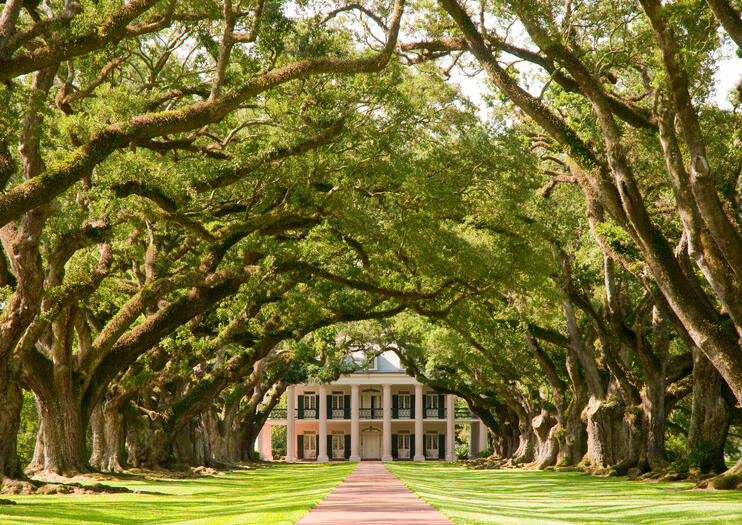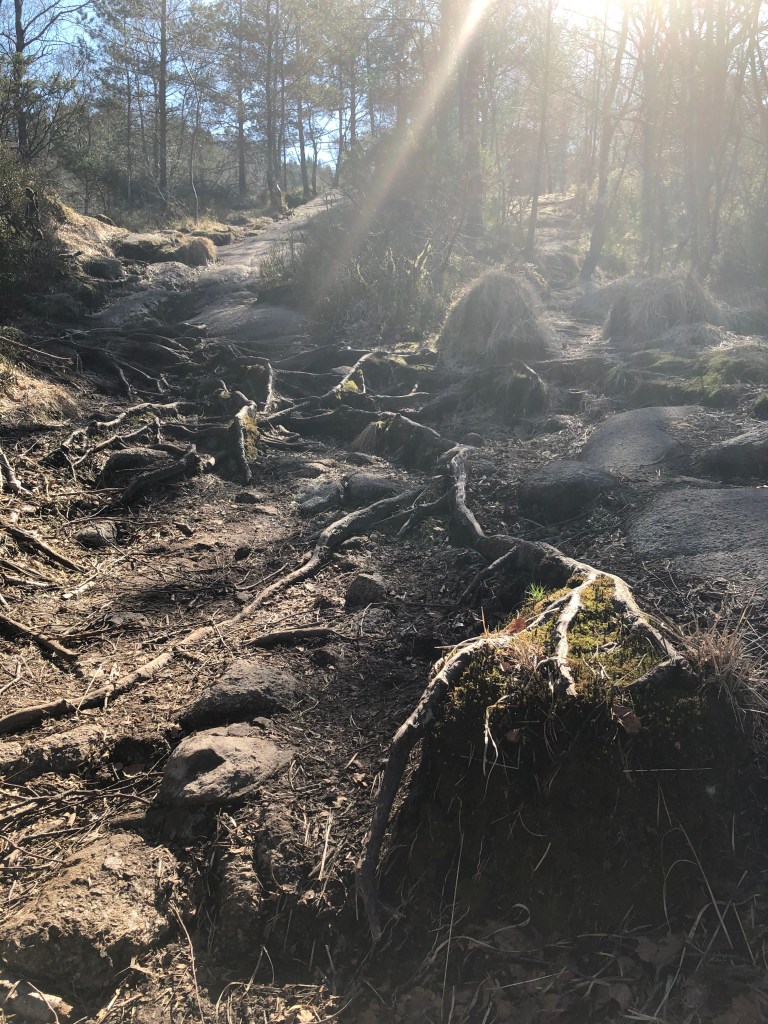Currently, I’m working on a paper that looks at the ways that Attica Locke’s The Cutting Season, amongst other things, critiques the plantation tourism industry in the South. As I was researching, I came across Rebecca C. McIntyre’s “Promoting the Gothic South,” an article that explores the ways that travel writers, after the Civil War, began to construct images of the South, specifically in regard to a deteriorating landscape filled with swamps. These Northern writers, as McIntyre notes, painted “[t]he southern scene [as] a gothic landscape created to be distinctly southern yet serve northern needs.”
Most of the images that McIntyre uses in her essay present stately oaks with Spanish moss hanging from the limbs, an image often associated, even today, with the South. No matter what film, book, or picture one sees of the South, Spanish moss blowing in the wind as it dangles from the limb of an oak or cypress tree undoubtedly makes some appearance. This image has become synonymous with the South, and specifically spaces such as Louisiana. I’ve written about this some before looking at the juxtaposition of beauty and brutality in Solomon Northup’s narrative.
In her discussions of the rise of the swamp after the Civil War in imagery of the South, McIntyre argues that the popular idea of the sublime led to the increase in such images. She writes, “Imported from England, the idea of the ‘sublime’ and its opposite, the ‘beautiful,’ were aesthetic categories used to evaluate nature. A sublime scene was one that awed a viewer with its power, its grandeur, or, in the case of the swamp, its dark, foreboding atmosphere.” This confluence of beauty and the sublime is something I have been thinking about lately, especially while writing my piece on Locke’s novel.
For me, the oak tree sums up a lot of these thoughts. These trees live for hundreds and hundreds of years, surviving amidst countless disasters. They stand, stoic amongst the landscape, as life carries on all around them. As Jane Pittman says when talking about an oak tree in The Autobiography of Miss Jane Pittman,
That tree has been here, I’m sure, since this place been here, and it has seen much much, and it knows much much. And I’m not ashamed to say I’ve talked to it, and I’m not crazy either. It’s not necessary craziness when you talk to trees and rivers. But a different thing when you talk to ditches and bayous. A ditch ain’t nothing, and a bayou ain’t too much either. But rivers and trees–less, of course, it’s a chinaball tree. Anybody caught talking to a chinaball tree or a thorn tree got to be crazy. But when you talk to an oak tree that’s been here all these years, and knows more than you’ll ever know, it’s not craziness; it’s just the nobility you respect.
As a constant fixture of the landscape, oak trees symbolically chronicle the past while speaking towards the future.

At the University of Louisiana at Lafayette, there are century oaks, trees that Edwin Stephens, the university’s first president, planted in 1901 and that line the street into campus. There are other oaks on campus as well. The one I always think about sits behind Dupre Library. I do not know the tree’s age, but I do know it has been there long before the university arrived. It is so enormous that the university constructed a large, two level deck, underneath its canopy. Suspension cords and block keep some of the branches from even touching the ground. On these branches, you can sit down like you are sitting on a bench.
For all of the beauty of the majestic oaks, they evoke within me a sense of pain at the suffering they have seen. This feeling arises when I think about spaces such as Oak Alley Plantation, where stately oaks line the entrance way to the big house. The picturesque image from the entrance showcases the lands beauty and the magnificence of the house. Peppered on postcards, selfies, in books, and countless other places, this image creates an image of the antebellum South as an idyllic pastoral retreat from the hustle and bustle of the modern world where one can step back in time and walk in the shoes of the elite.

What these images don’t show, though, are the backs upon which Oak Alley Plantation arose. The blood, sweat, and tears of enslaved individuals who worked and lived on the plantation, erecting it and bringing the Roman family into prominence. The suffering of these individuals fed the roots of the oak trees and the land. They allowed for the growth and prosperity that Oak Alley enjoyed.
This thought makes me think about the large oak outside of Dupre Library, which, like many other oaks, spreads its branches throughout the sky while other branches drop towards the earth, almost as if they are wanting to return to something long hidden. These trees, to me, represent the foundations of the United States, steeped in the promise of equality but built upon the racial oppression of human beings. The unseen roots pulsate with hate and vitriol, breaking the ground and birthing these trees.
Some of the branches seek to escape the roots, moving as far as they can away from the ground, stretching upwards and outwards, struggling for release. Yet they remain ever tethered to the vile roots dug into the dirt that feed off of the poison that sustained them for so long and that continues to sustain them. Then there are other branches, ones that stretch upward, then underneath the sheer weight they exude, drop towards the ground, seeming as if they want to return underneath the dirt, merging with the roots.

Løvstakken
While I view, on one hand, these oaks as tainted and arising from disease, I also them as testaments to survival and what we can all accomplish if we seriously excavate what lies beneath our feet. As I was hiking Løvstakken this past weekend, I kept coming across trees growing out of the rocky surface. While these trees aren’t oaks, most are pine and birch, I started to think about the roots in a different manner. The roots of these trees find a space, amidst the rocks, to latch on to. They maneuver around the hate and burrow into the life giving earth for nourishment. They find a way, among all of the inhospitable terrain, to survive and thrive.
I want to think that we are the trees with roots among the rocks. The rocks can move away, fall off the side of Løvstakken and crumble. However, I think we’re more like the oak trees with the poisoned roots. No matter how high we grow, the foundation, until we cleanse the water feeding the roots, will continue to infect the entire tree. While the outside may look healthy, it slowly decays on the inside. We must fix the the tree. We must nourish it with equality, empathy, and compassion not subjugation, racism, and greed. We must feed it with love not hate. We must look after it, because if we don’t it will die under the stress that resides within its veins.
What are your thoughts? Please let me know in the comments below. Make sure to follow me on Twitter @silaslapham.
If you enjoy what you read here at Interminable Rambling, think about making a contribution on our Patreon page.